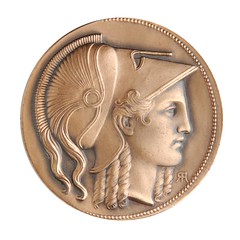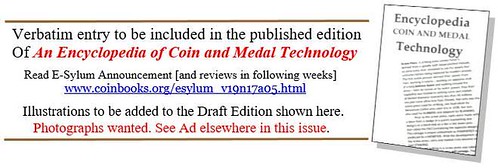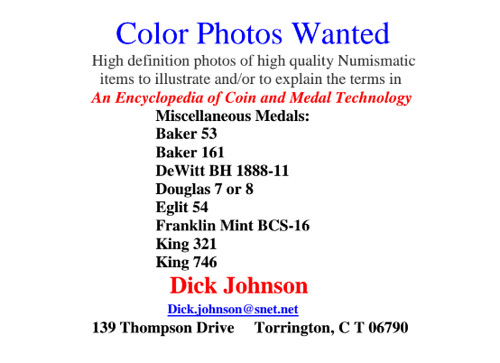
PREV ARTICLE
NEXT ARTICLE
FULL ISSUE
PREV FULL ISSUE
VOCABULARY TERM: CLASSICAL
Dick Johnson submitted this entry from his Encyclopedia of Coin and Medal Terminology. Thanks.
-Editor

This is an extreme example of Classical design in a modern medal by Robert I. Aitken for its device from ancient coins. Note the dots in an arc just inside the rim. This inspired the use of dentiles in 19th century coin designs. Classical – Design with emphasis on harmony, proportion, balance, and simplicity. It places great importance on beauty. First employed by artists in Greek and Roman times, and certainly evident in their coin designs. Thus it is the oldest of all formal art movements. When it was revived in Europe in late 18th and early 19th centuries it was called neoclassical. When it is copied in modern times, perhaps with less emphasis on beauty, it is called pseudoclassical. Art Movements. Artistic styles having common methods of expression or presentation and employed by a number of artists. Determining an art movement depends on recognizing a style used by more than one artist in the treatment of their subjects; for coin and medal design it is the use of similar shapes, texture and artistic mannerisms. Naming these styles aids the art community in writing and speaking of each art style as its own entity. The artists who create in similar style are often close in time or location (as one artist may imitate another whose style he admires). When close in time it is sometimes called a “period” or a movement. Art movements have changed with time. Early art stressed religious themes in fixed style. The Renaissance served as a rebirth with freer expression. In later years new movements arose as artists experimented more, giving birth to those art movements listed here (and many others). Artists sometimes trained together giving rise to a collective work of a school of art. In other forms of art, as painting and sculpture, these styles are often called “ism” as impressionism. Some typical art movements – classical, renaissance, abstract, modern – indeed do apply to medallic art; many others do not, as constructivism, cubism, dadaism, minimalism, pop art, surrealism for example. The requirements of coins and medals, predominately that being reproduced in metal of monochromatic color, prohibit some art movements in medallic design. Thus the art movements of painting, where color is so dominate, do not transfer to medallic art, the art movements of sculpture, however, are more inviting. (Color in medallic art can be implied by texture; there is a set scheme of line direction that indicates color. See HERALDRY.) In modern times strict art movements have somewhat disappeared, replaced by contemporary art, where individualism and diversity prevail. Thus coin and medal artists develop their own personal style of medallic design (and no other artist as yet has imitated their style). See STYLE and TECHNIQUE. Native American Art Movements. “Federal Style” should be mentioned (see list) since it was a truly American creation. The first coins struck at the early U.S. Mint were created in a somewhat neoclassic style. However, the use of the head of Liberty, the stylized eagle and stars as subsidiary devices – even though influenced by French coin designs – were uniquely American in presentation. Lesser known, the Philadelphia School of Art occurred in the second half of the 19th century. It was influenced by the Federal Style but without subsidiary devices. It was usually of a single obverse device, and otherwise pseudoclassic. Obviously, it flourished among Philadelphia coin and medal artists, both inside and outside the U.S. Mint, but the work of all private medal makers in Philadelphia following the Civil War was of this stark, stiff style devoid of decoration and embellishment. MEDALLIC OBJECTS can be traced to the eight productions by six American artists in 1965. Perhaps this can be said to be the first modern art in American art medals. While America created the first medallic objects, the French developed this new media to a fine art in its own right. References: CLASS 03.2
D21 {1971} Vermeule. Introduces term ederal style for early American coins.
Note: This is a stub of the total entry which includes descriptions of twenty art movements.


Wayne Homren, Editor The Numismatic Bibliomania Society is a non-profit organization promoting numismatic literature. See our web site at coinbooks.org. To submit items for publication in The E-Sylum, write to the Editor at this address: whomren@gmail.com To subscribe go to: https://my.binhost.com/lists/listinfo/esylum All Rights Reserved. NBS Home Page Contact the NBS webmaster 
|